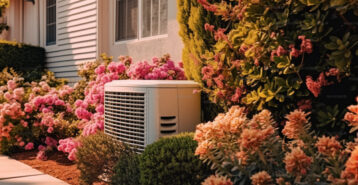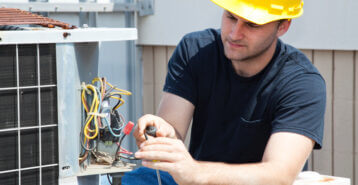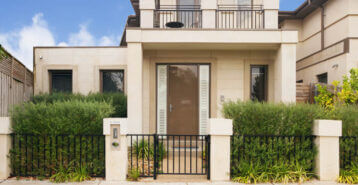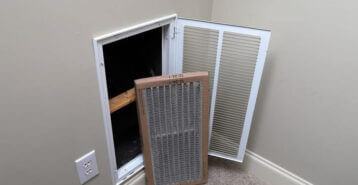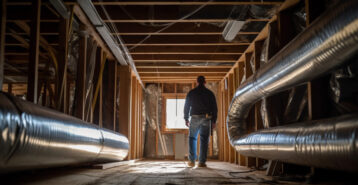Complete Guide to Installing a Central AC Unit
Your home’s central AC unit is a critical component when it comes to cooling your home and being comfortable. Understanding how a new central air conditioner works, what to expect with the installation process, factors that may affect your purchase, and how to hire a qualified contractor are all essential to getting the best return on your home investment.
Central Air Conditioning Units & How They Work
Central AC unit installation involves connecting a new air conditioning system to your home’s existing ductwork to distribute cool air throughout the space. In most cases, a central AC unit is paired with a heating system, like a furnace, to keep your home comfortable year-round. Together, these systems help regulate both cooling and heating, maintaining the ideal temperature in every room.
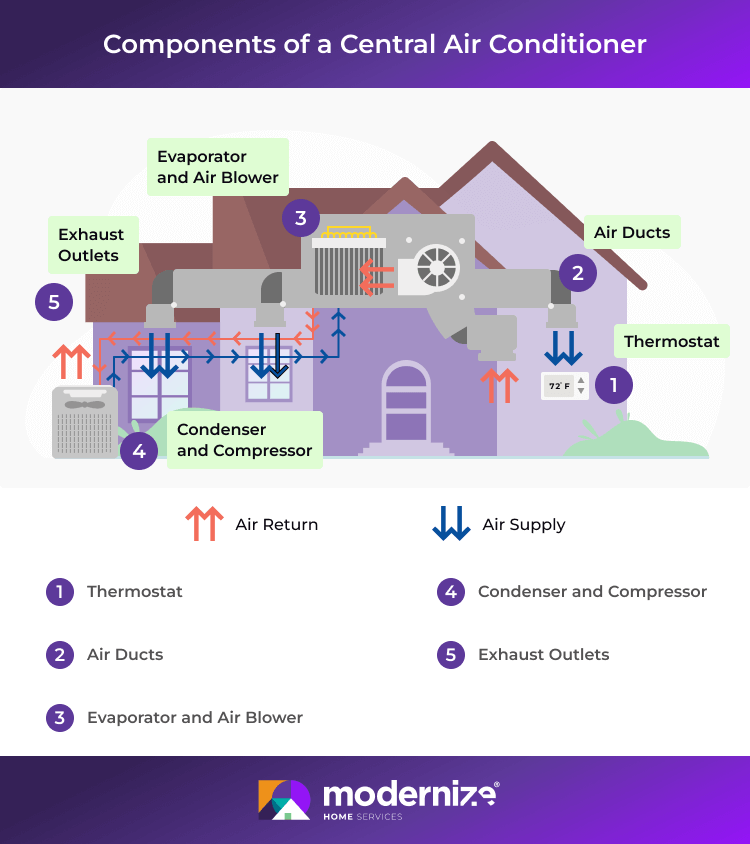
A home’s air conditioning system is made up of three key components: the condenser, compressor, and evaporator. The condenser and compressor are located outside your home, usually mounted on a small concrete slab for easy access and maintenance. Inside your home, the evaporator — which includes the evaporator coil and air handler (or blower) — is typically installed in a dedicated closet or in the attic. If your home has a furnace, the evaporator is often positioned above it, connecting to the plenum or main ductwork to distribute cool air.
In homes without a furnace, some central AC systems may include an electric resistance heating element to provide heat during colder months. However, this guide focuses on how a central AC unit cools your home.
A central AC unit uses a forced air distribution system, meaning the same ductwork, motor, and blower circulate both heated and cooled air throughout your home. When the system is running, warm indoor air is pulled in, cooled as it passes over the evaporator coil, and then pushed back through the ducts to lower the temperature in every room.
Which Homes Are Best For a Central AC Unit?
When deciding if a central AC unit is the right choice for your home, several factors come into play. The age of your home, the size and layout of your home, and your region’s climate zone influence the best cooling option for your home. Here’s a breakdown of these factors to help guide your decision.

- Home Age: Homes built after the late 1960s typically have the ductwork and infrastructure needed for a central AC unit. If your home was built earlier, it may not have ducts in place, which can increase the time, labor, and overall cost of installation.
- Home Size and Layout: Larger homes and multi-story buildings benefit most from a central air conditioning system because they need even, consistent cooling across multiple rooms and floors. If you’re unsure what size system you need, use our air conditioner size calculator to help determine the right fit.
- Open-Plan or Smaller Homes: Smaller homes or those with open layouts may not need a full central AC system. These homes often get enough airflow from cross-ventilation and ceiling fans. In this case, a ductless mini-split, window unit, or portable air conditioner could be a more affordable and efficient option.
- Local Climate: Your location and climate should also guide your choice. In areas with mild summers, options like attic fans or AC heat pumps may provide enough cooling. In hot, dry climates — such as the southwestern U.S. — evaporative coolers are a popular, energy-efficient solution. A licensed HVAC contractor can help you choose the best system for your home based on where you live.
When to Plan for a Central AC Unit Installation
Here are a few key signs and situations when it may be time to plan for an AC unit replacement:
- Your Home Isn’t Cooling Properly: If your home still feels warm even after cleaning the air filters, condenser, and coils, there may be a larger issue. Start by cleaning these components to remove dust and debris, as buildup can limit your system’s performance. If your home still isn’t cooling efficiently, contact a licensed HVAC contractor to inspect your system. They can identify whether the problem is a simple repair—or if it’s time to replace the entire unit.
- Your AC Unit Has Mechanical Problems: If your AC isn’t turning on, is blowing warm air, or is making strange noises, there may be mechanical or electrical issues. These problems often require professional diagnosis and repair. An experienced HVAC contractor can assess whether repairs will restore your system or if a full replacement is the better long-term solution.
- The Time of Year: The best time to schedule a central AC installation is in the spring or early fall. Mild weather makes it easier for contractors to access both indoor and outdoor equipment, and you’ll avoid the summer rush when HVAC professionals are busiest. Planning ahead can help you secure a convenient installation date and potentially lower costs.
- When Your Budget Allows: A new central AC unit is a significant investment, and planning ahead can help you avoid unexpected expenses. On average, a central AC replacement costs between $6,465 and $11,877. You can use our HVAC cost calculator to get a more accurate estimate based on your home and needs.
What Happens During AC Installation?
It takes between four and eight hours to replace an AC unit. If you are installing central air conditioning for the first time, plan on an additional two to four days for ductwork installation. Here are the steps for a central air conditioning replacement:
- Removal and disposal of the existing AC unit.
- Inspection of ductwork, electrical connections, and piping to determine if anything needs to be repaired or replaced.
- Installation of new AC unit and addition of refrigerant.
- Addition of refrigerant.
- Testing and inspection to ensure the new unit works properly.
- Installation of a new thermostat if needed.
- Final inspection.
Hiring an HVAC Contractor
Hiring a reliable local HVAC installer is crucial for your project. A high level of training, knowledge, and experience is required for proper installation of central air conditioners. The system’s main components — the evaporator and the condenser — are sealed units. Special training and tools are needed for servicing them.
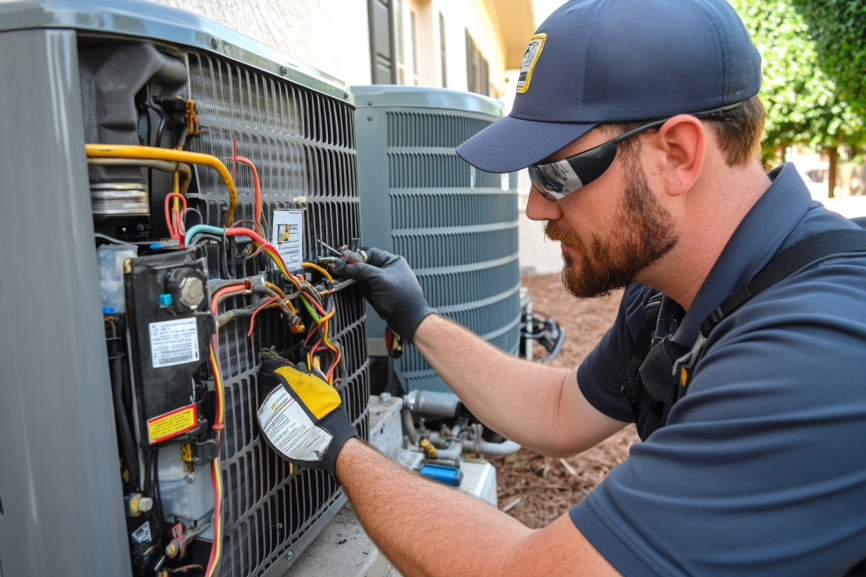
Choosing the right central air conditioning contractor is as important as selecting the best HVAC system. Before hiring, verify that the contractor is licensed and insured for the work. They should also be authorized to replace refrigerant, as required by the Environmental Protection Agency. It is advisable to select a professional accredited by the Air Conditioning Contractors of America (ACCA), as they are trained in current methods and ANSI standards. If desired, HVAC pros can be found through Modernize. All contractors are vetted for you.
The Better Business Bureau (BBB) is a valuable resource for vetting contractors. Any complaints, lawsuits, or concerns will be on file regarding the HVAC contractor. Online reviews can also help determine if your central AC contractor is a good choice.
Finally, don’t forget to ask about AC warranties.
For more information, click on our full checklist for hiring an HVAC contractor and find questions to ask before making your decision.
How To Prepare for Your Central AC Unit Installation
Preparing for your central AC unit installation is essential to ensure a smooth, efficient process. Follow these five key steps:
- Assess Your Home’s Needs: Determine the right size and type of AC unit based on your home’s square footage and layout.
- Clear the Installation Area: Remove furniture, decorations, or other obstacles near the installation site so contractors can easily access the space.
- Check Ductwork and Electrical Systems: Inspect your ductwork for damage. Make sure your electrical system can support the new AC unit.
- Schedule Installation During Off-Peak Times: Plan your installation for spring or fall. HVAC professionals usually have more availability and lower demand then.
- Discuss Preferences with Your Contractor: Share any specific concerns or preferences about the installation process before work begins.
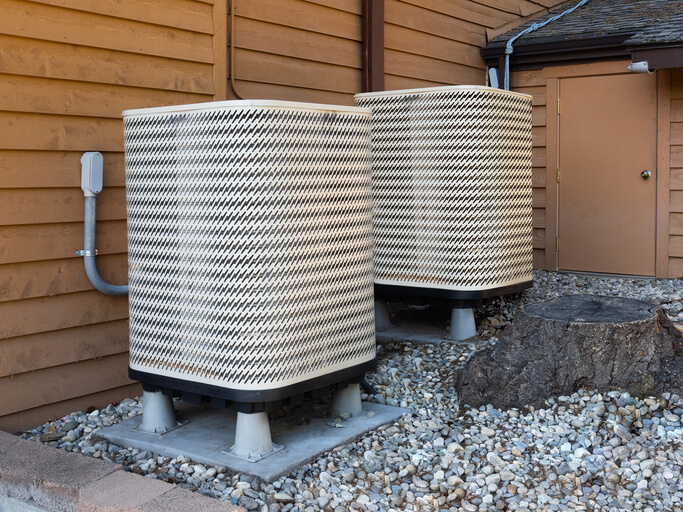
Central HVAC Maintenance
Preventive maintenance for your central air conditioner can help you avoid costly repairs and extend the life of your HVAC system. Regular checkups not only keep your system running smoothly but can also improve energy efficiency and lower utility bills. The benefits of preventive maintenance far outweigh the potential costs of unexpected repairs. With routine care, you can expect:
- Peak performance when you need it most: A well-maintained system is less likely to break down during the hottest months.
- Improved energy efficiency: A clean, finely tuned central AC unit uses less energy and helps lower your monthly utility bills.
- Early detection of problems: Regular maintenance can catch equipment issues early, allowing you to fix them before they become costly repairs.
- Peace of mind: Knowing your central AC system is running efficiently and reliably keeps your home comfortable all year.
Other Types of Central Air Systems
While traditional central air conditioning systems are common, there are other types of central air options that may better fit certain homes and budgets:
- Split Air Conditioning Systems: A split (or ductless) AC system uses an outdoor and an indoor unit to maintain a comfortable temperature inside your home. Mini-split AC systems include one indoor unit connected to an outdoor condenser, while multi-split systems connect multiple indoor units to a single outdoor unit to cool multiple zones.
- Heat Pump Split AC Units: These systems move heat out of your home during warm months and bring warm air inside during colder months. Heat pump installations usually cost less than traditional systems. However, they work best in regions without extremely cold winters.
- AC Window Units: These simple, self-contained systems fit into a window and cool a single room or small area. They offer a budget-friendly cooling option but can’t cool an entire home.
- Portable Air Conditioners: Portable AC units use an evaporative system and can move from room to room. They vent warm air outside using a hose or split system. These units work well for renters or smaller spaces.
- Evaporative Coolers: These systems cool the air by drawing exterior air through water-soaked pads. As the water evaporates, it lowers the air temperature and circulates cooler air throughout the home.
- Whole House Fans: Whole house fans work by drawing in cool air from open windows and pushing warm air up into attic vents and out of the home.
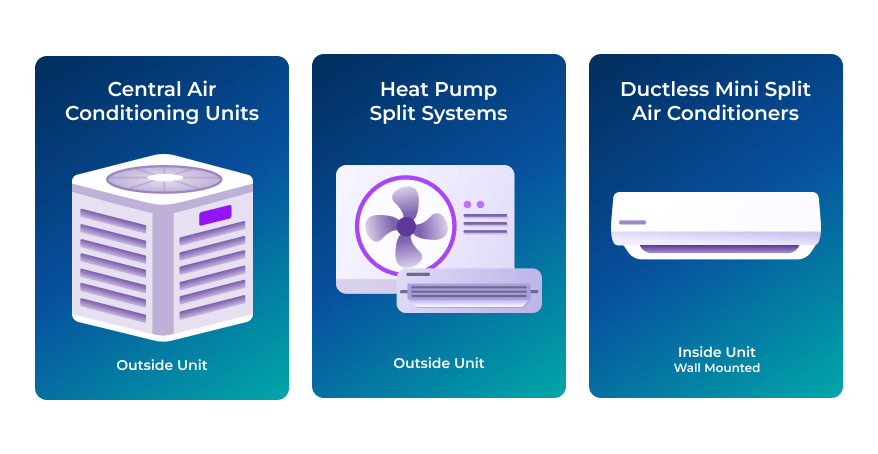
Compare top-rated HVAC pros in your area.
Read real homeowner reviews, explore qualifications, and view promotions. Modernize makes it easy to browse professionals and find one that will be perfect for your project.

